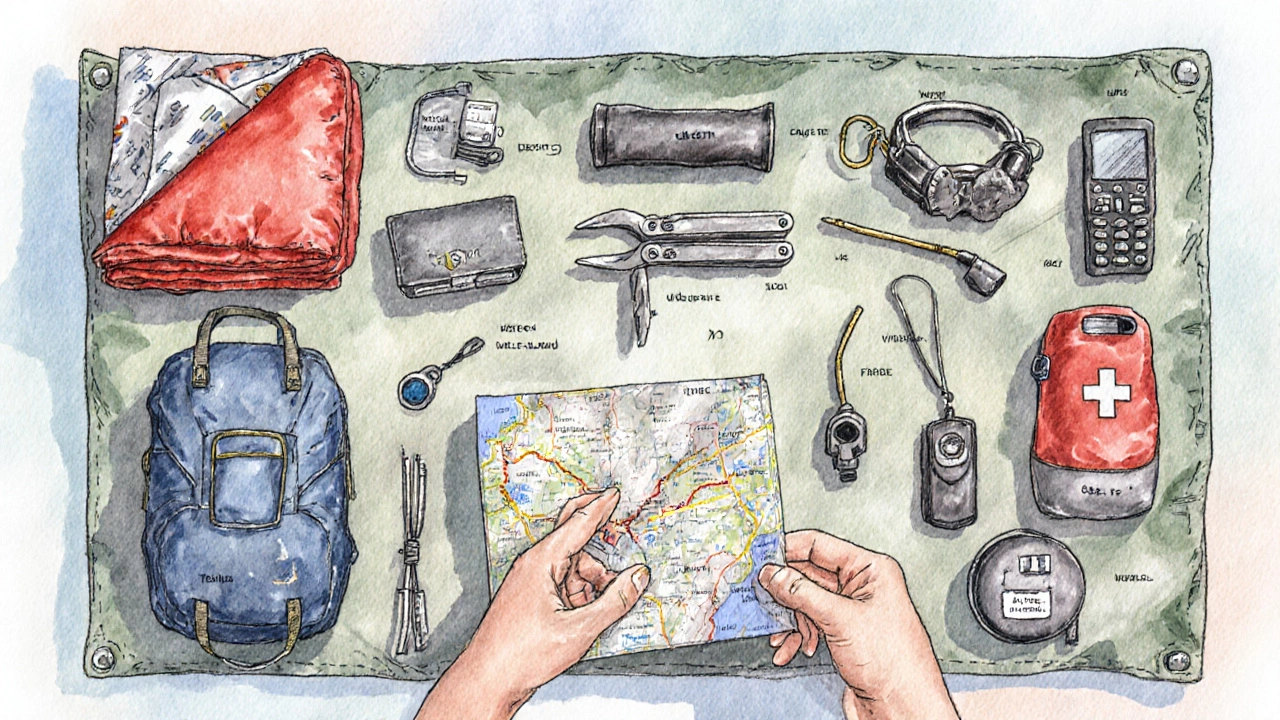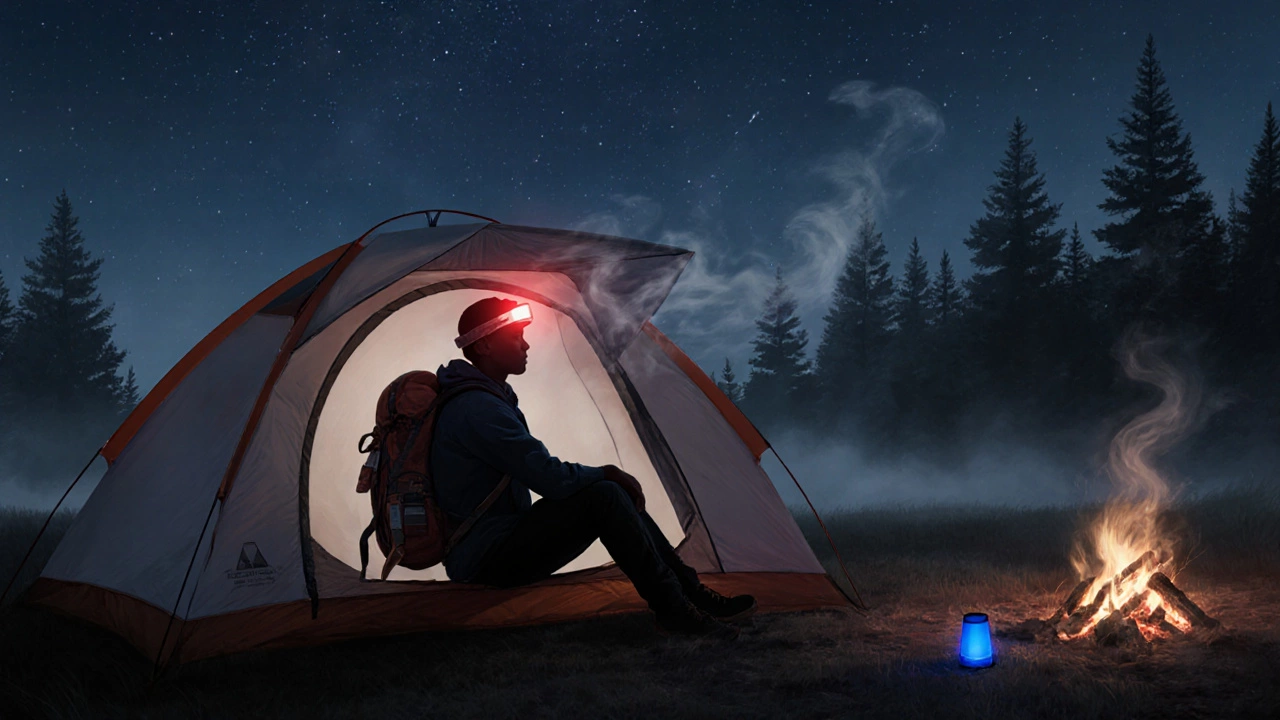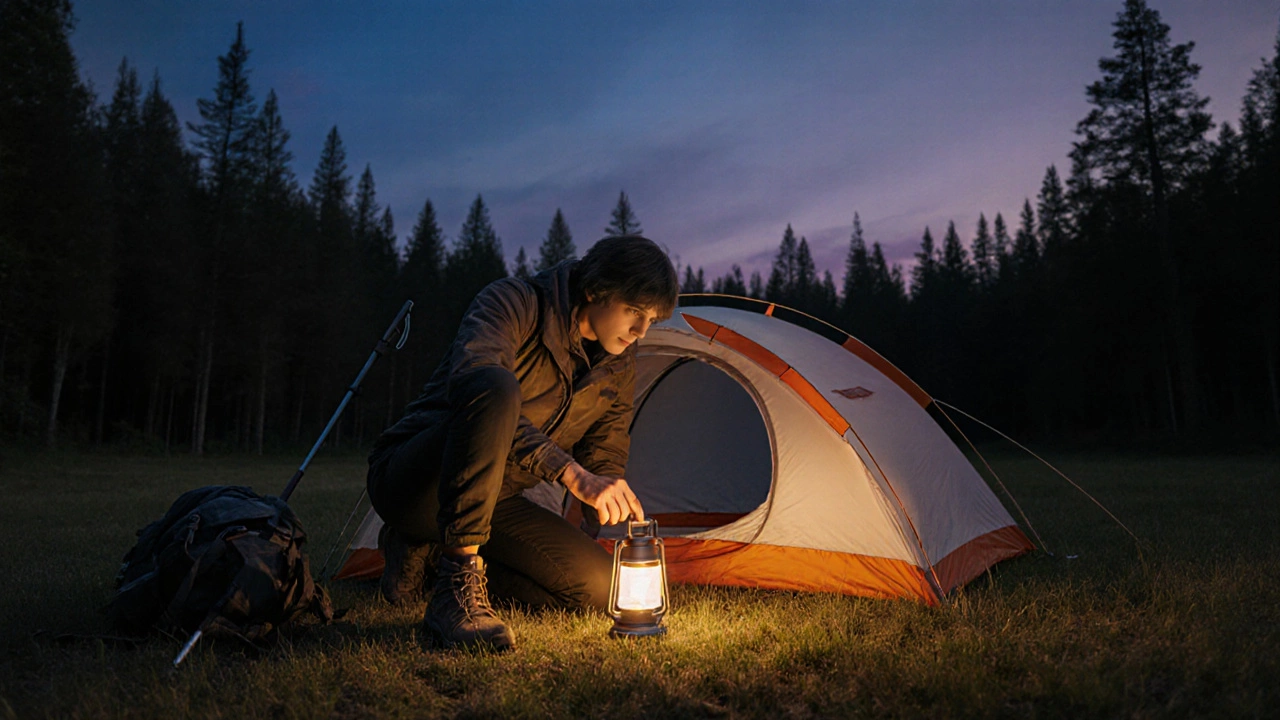Solo Camping Safety Gear Checker
Assess Your Solo Camping Preparedness
Select the safety gear you have for your next solo camping trip. We'll calculate your preparedness score and identify critical gaps.
Thinking about setting up your tent by yourself and wondering if it’s a smart move? Solo camping can feel freeing, but it also brings a unique set of safety challenges. This guide walks you through the real risks, the must‑have gear, and the practical steps to make a lone night under the stars as secure as possible.
Understanding the Risks of Solo Camping
When you camp alone, you miss out on the extra pair of eyes and ears that a buddy provides. The most common hazards include:
- Medical emergencies - a sudden injury or illness can be hard to manage without help.
- Weather surprises - storms can hit faster than you expect, especially in exposed sites.
- Wildlife encounters - a lone camper may be more tempting to curious animals.
- Security concerns - isolated spots can attract unwanted attention.
- Navigation errors - losing your way back to the car or main road is easier when you’re on your own.
Knowing these risks helps you plan the right defenses.
Choosing a Safe Site for Solo Camping
Not every campsite is created equal. Look for the following attributes before you book or claim a spot:
- Clear signage and map access - you should be able to locate the site on a reliable map or app.
- Proximity to help - a campsite within a short walk of ranger stations, a shop, or a main road offers quicker assistance.
- Lighting and visibility - well‑lit areas deter mischief and make it easier to spot wildlife.
- Secure perimeters - fenced or natural barriers can keep animals out.
- Reviews from solo campers - check forums for stories about safety at that location.
When you can, scout the area on a weekday before your night‑time arrival. A quick walk around the perimeter can reveal hidden risks like loose rocks or low‑lying flood zones.
Solo camping is a type of outdoor recreation that involves setting up camp without companions. It offers independence but demands thorough preparation. Essential Gear Checklist
The right equipment can turn a dangerous situation into a manageable one. Below is a quick‑reference table that compares the core items you should pack.
| Gear | Purpose | Typical Weight | Average Cost (USD) |
|---|---|---|---|
| Emergency kit | Immediate response to injuries or weather events | 2‑3lb | 30‑60 |
| Communication device (sat‑phone or two‑way radio) | Call for help when out of cellular range | 0.5‑1lb | 100‑250 |
| First aid kit | Treat cuts, blisters, burns, etc. | 0.7‑1lb | 25‑50 |
| Navigation app with offline maps | Find routes and avoid getting lost | negligible | Free‑20 |
| Personal Locator Beacon (PLB) | Send GPS signal to rescue services | 0.2‑0.3lb | 150‑250 |
We’ve highlighted the most critical items, but you can adjust weight and cost based on your trip length.
Preparing Your Emergency Kit
Think of your emergency kit as the first line of defense. It should contain:
- Emergency blanket - lightweight, retains body heat.
- Multi‑tool - pliers, knife, screwdriver.
- Fire‑starter - waterproof matches or ferro rod.
- Water purification tablets - essential if you run out of clean water.
- Whistle - a simple way to signal for help.
Pack the kit in a waterproof pouch and keep it within arm’s reach of your sleeping area.

Staying Connected: Communication Devices
Cellular coverage can disappear the moment you step off a paved road. A reliable communication device-either a satellite phone or a two‑way radio-ensures you can call for assistance if needed.
Before you head out, test the device, charge it fully, and save emergency numbers (local ranger, nearest hospital). If you’re on a budget, a low‑cost satellite messenger (e.g., Garmin InReach Mini) can send SOS signals with GPS coordinates for under $200.
First Aid Skills: More Than Just a Kit
A first aid kit is only as good as the knowledge you have to use it. Spend a few hours before your trip learning to:
- Control bleeding with a tourniquet.
- Treat hypothermia using the “buddy” method (if someone else is around) or by layering blankets.
- Manage allergic reactions with an epinephrine auto‑injector-if you have known allergies.
Online courses from Red Cross or St John Ambulance are concise and can be completed in a single weekend.
Navigation and Location Tracking
Even the most familiar trails can look different after dark or in fog. A navigation app with offline maps (like Maps.me or Gaia GPS) lets you see your exact position without relying on cell service.
Consider adding a personal locator beacon (PLB) to your pack. In an emergency, you press a button, and a global rescue network receives your GPS coordinates within minutes. It’s a one‑time purchase that can be a lifesaver.

Safety Routine Before You Sleep
Implement a short pre‑sleep checklist each evening. This habit forces you to verify that everything essential is secure.
- Inspect all fire pits and ensure embers are completely out.
- Secure food in bear‑proof containers or lockable boxes.
- Set a quick‑access emergency light (headlamp with red mode).
- Verify that your communication device’s battery is still above 80%.
- Leave a note with your campsite location, expected departure time, and emergency contacts on a visible but discreet spot (e.g., under a rock). If you’re ever rescued, the note gives responders a starting point.
Following this routine reduces the chance that a small oversight turns into a major issue.
When Things Go Wrong: Emergency Response Plan
If you find yourself in trouble, stay calm and follow these steps:
- Assess the situation - Determine if you can safely move or need to stay put.
- Use your communication device - Send a clear SOS with your exact coordinates.
- Apply first‑aid measures - Stop bleeding, keep the injured person warm.
- Signal for help - Use a whistle, flash a LED light repeatedly, or set up a simple ground‑signal (e.g., three X’s).
Never attempt a risky trek in bad weather; waiting for rescue is usually safer.
Is Solo Camping Worth the Risk?
Answering this question depends on your comfort level, preparation, and the environment you choose. If you take the precautions outlined above-selecting a well‑maintained campsite, packing the right gear, and rehearsing emergency steps-the odds tilt heavily in favor of a safe, enjoyable night alone.
Many seasoned hikers report that solo nights sharpen their problem‑solving skills and deepen their connection with nature. The key is not to underestimate the challenges, but to meet them with clear, practical tactics.
Frequently Asked Questions
What is the safest type of campsite for a solo camper?
Look for sites with clear signage, nearby ranger stations or shops, good lighting, and positive reviews from other solo campers. A campsite inside a managed forest or a national park’s designated area usually meets these criteria.
Do I really need a personal locator beacon (PLB) if I have a satellite phone?
A PLB is a dedicated SOS device that works even if your satellite phone battery dies or the network is down. It’s cheaper over the long term (no subscription) and adds a redundant safety layer, so many solo campers carry both.
How can I protect my food from wildlife when camping alone?
Store food in a bear‑proof container or lock it inside your vehicle if you’re in a car‑accessible site. Hang food in a tree using a “bear bag” technique-at least 10ft off the ground and 4ft from the trunk.
What should I do if a storm rolls in while I’m camping alone?
Secure your tent, tie down any loose items, and seek higher ground if there’s a risk of flooding. Stay inside the tent, use an emergency blanket to retain heat, and keep your communication device charged to call for help if needed.
Is it safe to camp on a last‑minute campsite that hasn’t been inspected?
Even on short notice, you can do a quick visual assessment: check for standing water, unstable ground, obvious fire hazards, and nearby wildlife signs. If anything feels off, move a short distance away or choose another site.
